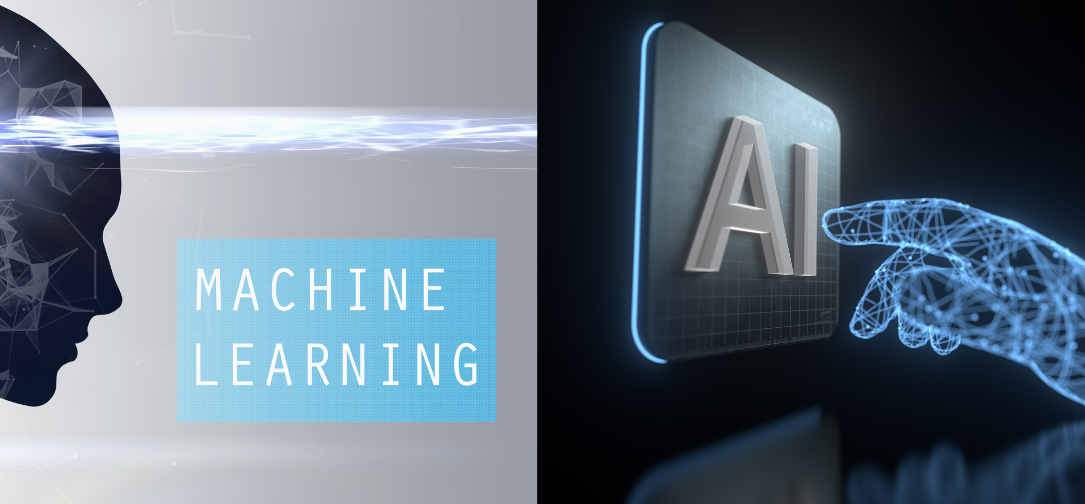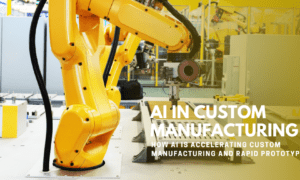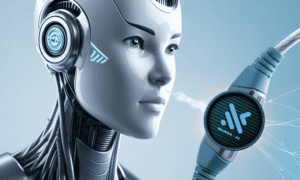At a general level, we can distinguish Artificial Intelligence (AI) as a broad concept, encompassing the creation of intelligent machines capable of simulating human thought capacity and behavior. Machine Learning (ML), on the other hand, is an application or subset of AI that allows machines to learn from data without the need for explicit programming.
“It’s important to understand that AI and Machine Learning are interconnected but distinct concepts,” explains Lucas Mohallem Ferraz, a specialist in software development and systems architecture. “While AI seeks to create systems that simulate human intelligence, Machine Learning is a powerful tool to achieve this goal, allowing machines to learn and continuously improve from data.”
Machine Learning
Machine learning deals with extracting knowledge from data. It can be defined as a subfield of Artificial Intelligence, which allows machines to learn from data or past experiences. It is an application of AI that uses mathematical models of data to help a computer learn without direct instruction. This allows a computer system to continue learning and improving based on the experience of historical data. However, it only works in specific fields of the data provided. For example, a machine learning model created to detect images of cats will only provide results for images of cats. If new data is provided, such as an image of a dog, the model will stop responding.
Examples of machine learning use cases are: the online recommendation system for Google search algorithms, the spam filter, and the automatic tagging suggestion on Facebook.
Machine learning can be divided into three types:
- Supervised Learning
- Reinforcement Learning
- Unsupervised Learning
Artificial Intelligence
As we saw above, in summary, artificial intelligence is a field of computer science that creates computer systems capable of imitating human intelligence. It is composed of the words “Intelligence” and “Artificial”, which mean “a synthetic thinking ability created by man”.
Artificial intelligence is the ability of a computer system to imitate human cognitive functions, such as learning and problem-solving. Through AI, a computer system is able to use logic and mathematics to simulate the reasoning that people use to learn from new information and make decisions.
Artificial intelligence systems do not require programming, but use intelligent algorithms.
How AI and Machine Learning Work Together
When looking for the difference between artificial intelligence and machine learning, it is more useful to understand how they interact through their close connection than to look for their differences. Here’s how AI and machine learning work together:
- An AI system is built using machine learning and other techniques.
- Machine learning models are created by studying patterns in the data.
- Data scientists optimize machine learning models based on patterns.
- The process is repeated and refined until the accuracy of the models is high enough for the tasks to be performed.
“This symbiotic relationship between AI and Machine Learning is fundamental to the development of increasingly sophisticated and efficient solutions,” Lucas points out. “By combining the learning ability of machines with artificial intelligence, we can create systems capable of making complex decisions, optimizing processes, and generating valuable insights for businesses.”
The Power of Artificial Intelligence and Machine Learning
Neural networks are a series of algorithms modeled after the human brain and are used to train a computer to imitate human reasoning. The neural network helps the computer system achieve Artificial Intelligence through deep learning, also known as Deep Learning. Companies in almost every sector are discovering new opportunities through the connection between AI and machine learning.
These are just a few of the use cases that have emerged for this technology to help companies transform their processes and products:
- Predictive Analysis: This capability helps companies predict trends and patterns of behavior, discovering cause-and-effect relationships in data.
- Recommendation mechanisms: With recommendation mechanisms, companies use data analysis to recommend products that someone might be interested in.
- Speech recognition and natural language understanding: Speech recognition allows a computer system to identify words in spoken language and natural language understanding recognizes meaning in written or spoken language.
- Image and video processing: These features allow the recognition of faces, objects, and actions in images and videos and the implementation of functionalities such as visual search.
Benefits of AI and Machine Learning
The connection between artificial intelligence and machine learning also offers powerful benefits for almost every sector. These are just a few of the main benefits that industries have already been able to obtain:
- More sources of data input: AI and machine learning allow companies to discover valuable information in a wider range of structured and unstructured data sources.
- Better and faster decision-making: Companies use machine learning to improve data integrity and use artificial intelligence to reduce human error, a combination that leads to better decisions based on better data.
- Increased operational efficiency: With AI and machine learning, companies become more efficient through process automation, reducing costs and freeing up time and resources for other higher priority needs.
“AI and Machine Learning have the potential to revolutionize the way companies operate, from optimizing internal processes to creating new products and services,” says Lucas. “However, it is important to note that the implementation of these technologies requires careful planning and a deep understanding of the challenges and opportunities they present.”
Conclusion
In short, Artificial Intelligence (AI) and Machine Learning (ML) are powerful tools that are shaping the future of technology and business. AI, as a broad concept, aims to create intelligent machines that simulate human capacity, while ML, a subset of AI, allows machines to learn and improve based on data, without the need for explicit programming.
Lucas Mohallem Ferraz, a specialist in software development and systems architecture, emphasizes the importance of this symbiotic relationship, stating that “by combining the learning ability of machines withAI and ML are already being applied in various sectors, from predictive analysis and recommendation mechanisms to speech recognition and image and video processing. Their benefits include the ability to analyze large volumes of data, make faster and more accurate decisions, increase operational efficiency, and drive innovation.
However, as Lucas warns, the implementation of these technologies requires careful planning and a deep understanding of the challenges and opportunities they present. As AI and ML continue to evolve, it is crucial that businesses and society are prepared to harness the full potential of these tools, while considering the ethical and social implications of their application. Collaboration between technology experts, such as Lucas, and business leaders will be essential to ensure that AI and ML are used responsibly and beneficially for all.
Lucas is an expert ranked in the global top 5% on LeetCode Contests, with over a decade of experience leading national and international projects for major corporations, including Nestlé, Coca-Cola Andina, Pfizer, and Bradesco Seguros.



































